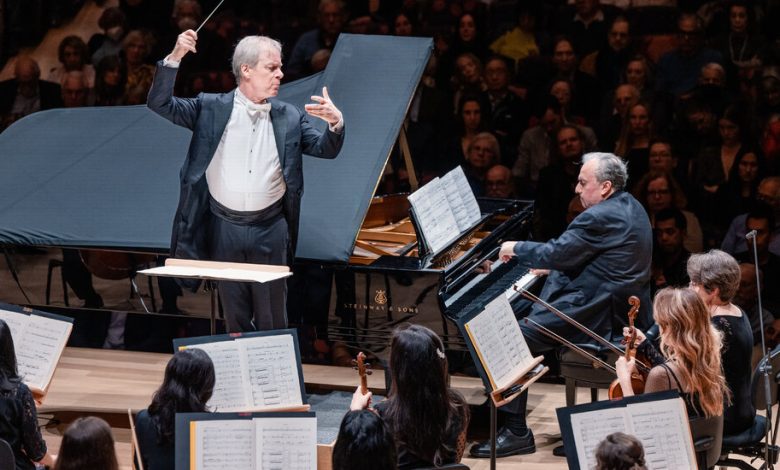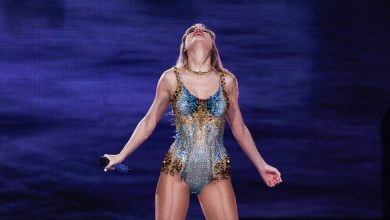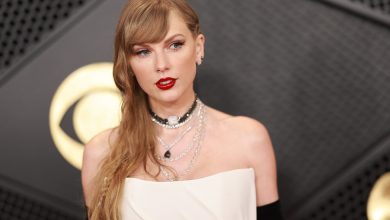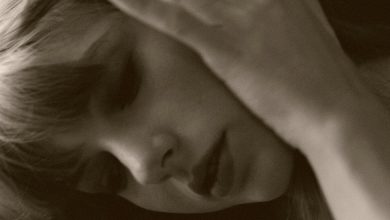Review: The Philharmonic Welcomes Back an Old Friend

It’s always a good sign when an orchestra’s players light up with smiles at a conductor.
And on Thursday night at David Geffen Hall, that happened over and over, with grins passing between the musicians of the New York Philharmonic and its podium guest, David Robertson, throughout a beguiling, smart program.
The concert began the Philharmonic’s festivities to celebrate the centennial of the Hungarian-Austrian composer Gyorgy Ligeti’s birth. Robertson led the U.S. premiere of “Mifiso la Sodo,” a short work for chamber orchestra that Ligeti wrote as a student in Budapest in 1948. He began revisions three years later, but never finished the job; the piece lay dormant until last year.
With its punchy, fake Italian title, “Mifiso” is crammed full of little musical jokes, show-off brilliance and jovial accents. Ligeti gave it the subtitle “Cheerful Music,” which is both an ironic riposte to the Stalinesque dictums that ruled the Hungarian arts in the 1940s and ’50s and a true description of this piece.
Robertson also resurrected a Ligeti work that the Philharmonic hadn’t played since 2004 (conducted by him back then, too): “Concert Romanesc,” or “Romanian Concerto,” a hurricane of color and exuberant virtuosity from 1951 that draws upon Romanian folk music. In this concerto for orchestra, there’s a particularly charming portion in which the basses pluck away, in gritty gutbucket style, while the violins whirl overhead in a zippy dance.
Another concerto — the Russian-born, London-based composer Elena Firsova’s Piano Concerto — provided a marked contrast in a delicate work that inverts the genre’s traditional fast-slow-fast structure. Firsova wrote it in 2020 for Yefim Bronfman, who gave its New York premiere on Thursday. (The performance was also the Philharmonic’s first of Firsova’s music.)
Firsova’s concerto diverged from the energy of Ligeti by ushering in a meditative pause with a solitudinous, brief introduction. One of her main themes is a wistful, upward-spiraling scale that darts through the piano and the various instruments of the orchestra. Near the end, she retreats into evanescent, gossamer textures from which a haunting, music box-like set of patterns emerges from the glockenspiel, vibraphone, tubular bells and the piano, which is played near the top of its range. Bronfman, an assiduous supporter of Firsova’s work, played with commanding surety.
The evening’s second half was devoted to Brahms’s Serenade No. 1, which originally was envisioned as a small chamber piece, but then Brahms kept expanding it. In its final version, the piece’s instrumentation is still lithe — just two each of flutes, oboes, clarinets, bassoons, French horns and trumpets, plus timpani and strings — but the winds and brasses in particular brought in a welcome plushness. The phrasing, under Robertson’s baton, was shapely and intentional, while tracing a persuasive through line back from Ligeti at the start of the program.
Robertson’s name has been raised from time to time over the years as a potential music director of the Philharmonic. While that’s unlikely to happen anytime soon, those big grins from players across the stage — not to mention their committed, warm performances — made the musicians’ feelings clear.
New York Philharmonic
Through Saturday at David Geffen Hall, Manhattan; nyphil.org.



